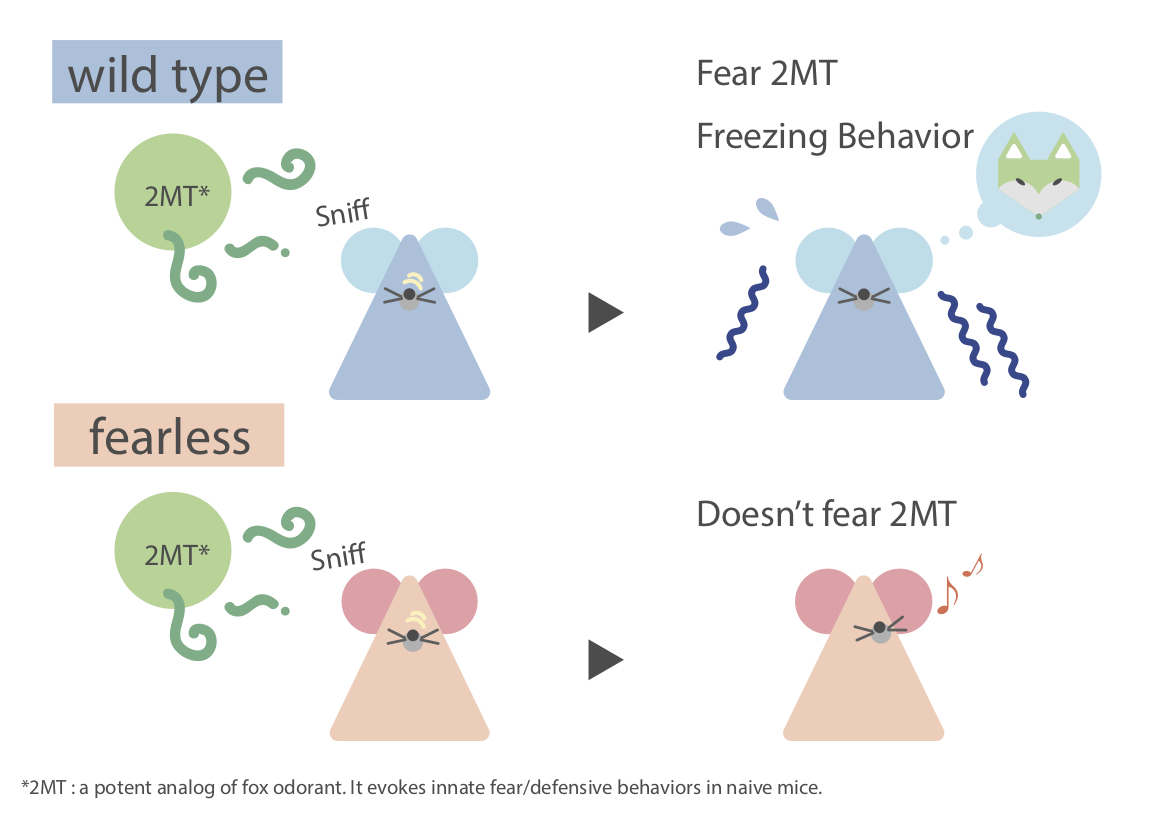
2018.05.24
An unexpected chemosensor pathway for innate fear behavior against predator odor (published on Nature Communications)
International research groups led by Dr. Qinghua Liu found that Trpa1 acts as a chemosensor to detect predator odors. Trpa1 is highly expressed in the trigeminal somatosensory system, which plays a crucial role in nociception, sensing harmful and potentially painful chemicals. They showed that Trpa1-expressed trigeminal neurons contribute critically to fear odor-evoked innate freezing behavior. This study provides a compelling molecular logic to explain how predator odor-evoked innate fear/defensive behaviors are genetically hardwired.
The article, “Large-scale forward genetics screening identifies Trpa1 as a chemosensor for predator-evoked innate fear behaviors” was published online in Nature Communications on May 23, 2018.
| Press release | |
|---|---|
| Link to article |
